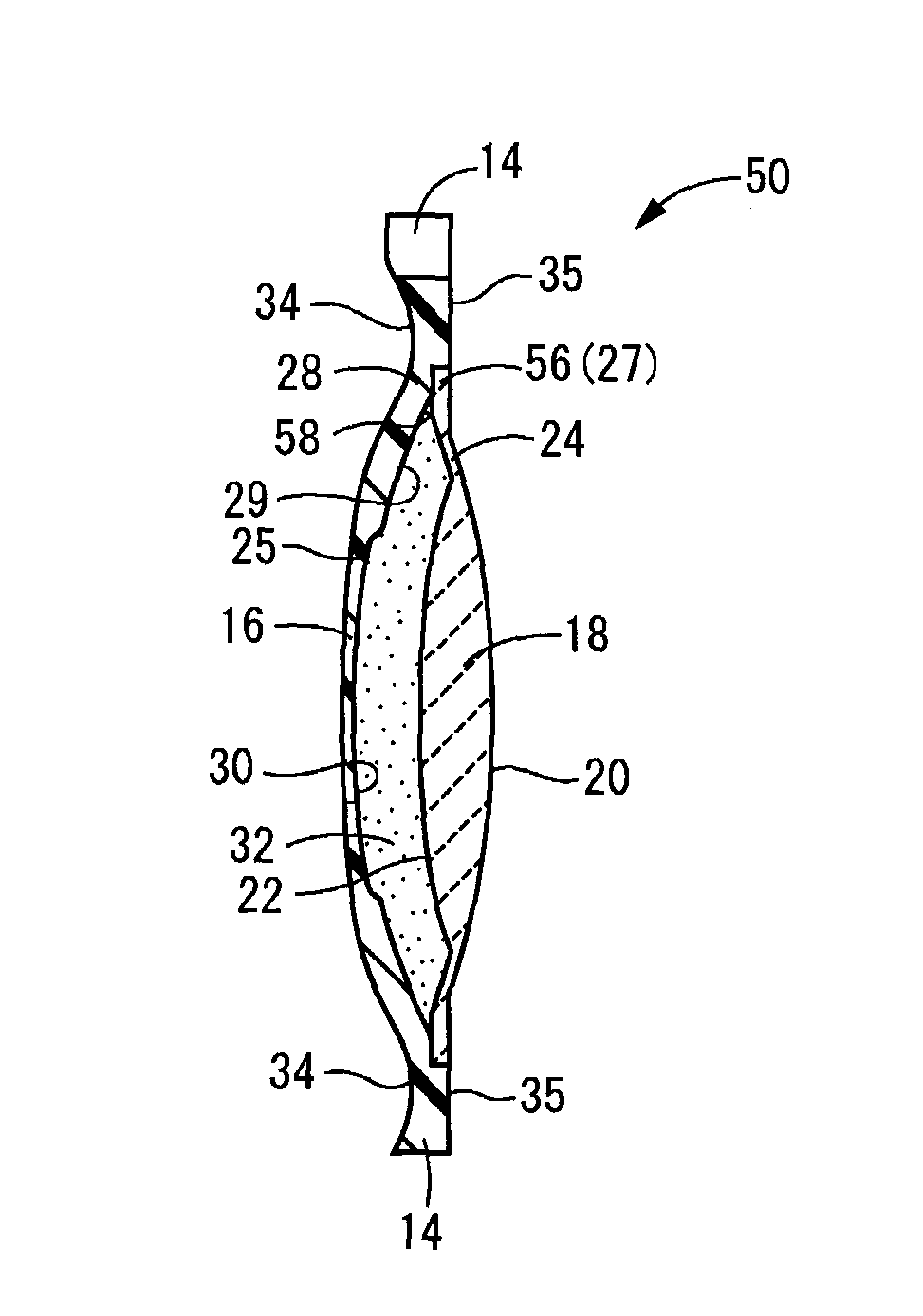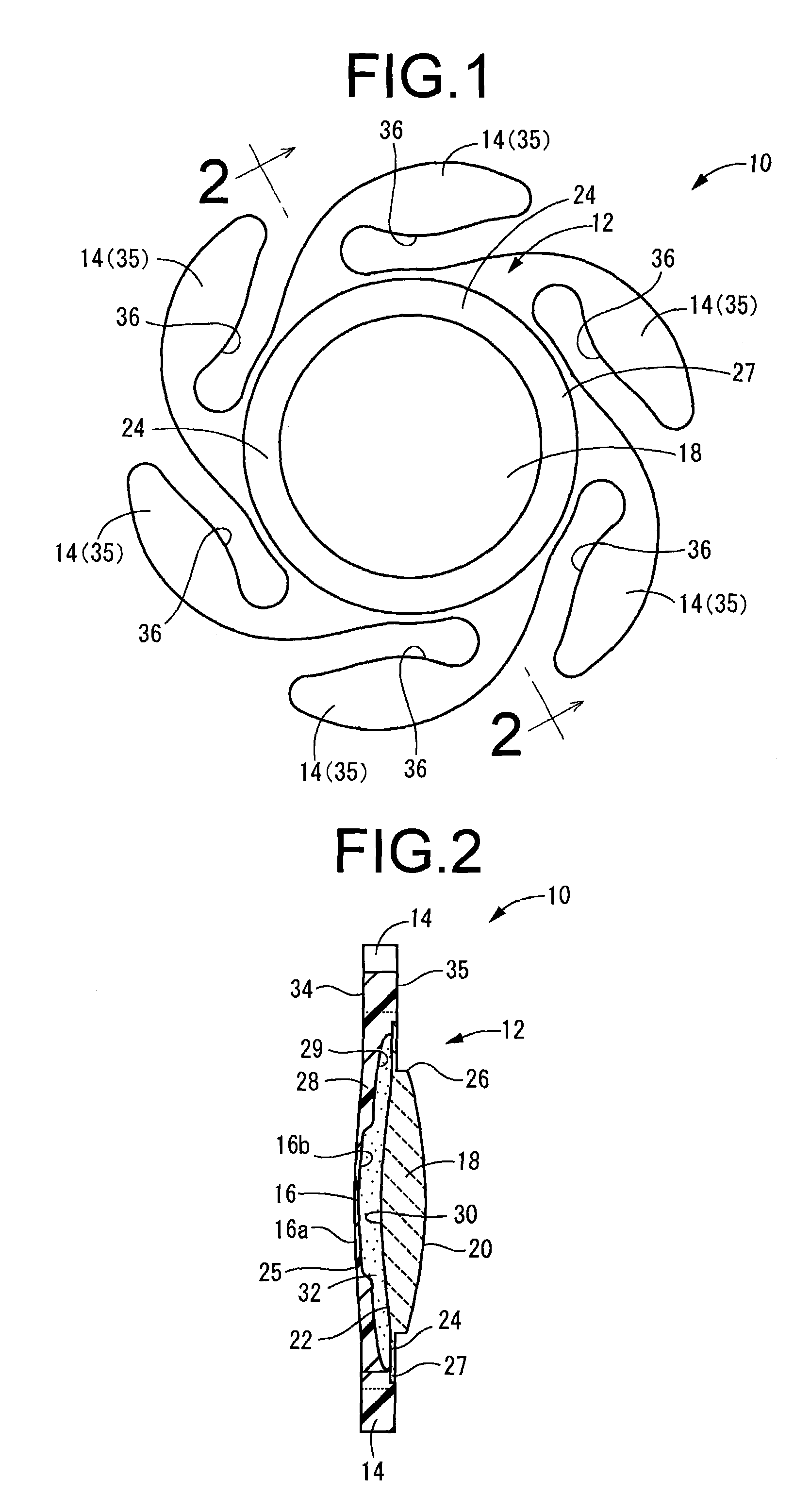Intraocular lens
a technology of intraocular lens and lens front film, which is applied in the field of intraocular lens, can solve the problems of unsatisfactory adjusting function, poor vision quality, and lack of focus adjusting power of ocular function, and achieve the effect of effective focus adjusting power and efficient change of lens front film shap
- Summary
- Abstract
- Description
- Claims
- Application Information
AI Technical Summary
Benefits of technology
Problems solved by technology
Method used
Image
Examples
first embodiment
First, FIGS. 1 and 2 depict an intraocular lens 10 as the present invention. The intraocular lens 10 of this embodiment, when inserted into the lens capsule, will be positioned with the left side in FIG. 2 facing towards the cornea and with the right side facing the posterior capsule. In the description hereinbelow, “front side” will be used in reference to the left side in FIG. 2, and “rear side” will be used in reference to the right side in FIG. 2. FIG. 1 shows the back face (face lying toward the posterior capsule) of the intraocular lens 10. In FIG. 2, in order to facilitate understanding, the front film 16 and the rear film 24 are shown with exaggerated thickness dimensions.
The intraocular lens 10 has a structure in which a plurality (six in the present embodiment) of support leg portions 14 constituting the positioning portions are formed along the entire circumference of the outside peripheral section of an optical section 12 of capsule structure.
To describe in greater detai...
second embodiment
The intraocular lens 60 in the present embodiment is generally similar in shape of the intraocular lens 50 of the second embodiment described above, but has smaller thickness dimension in the anteroposterior direction due to the smaller volume of the internal space 30 in comparison with the intraocular lens 50. Since substantially the entire mounting edge portion 56 of the rear film 24 of the intraocular lens 60 is juxtaposed against the inner recess face 29, the internal space 30 of the present embodiment has a shape lacking a shoulder portion 58 in the intraocular lens 50 discussed earlier.
While the outer face 20 of the optical lens 18 in the intraocular lenses 50, 60 of the second and third embodiments above have flat shape lacking a sharp edge shape, it is of course possible for the outer face 20 of this optical lens 18 to be furnished with a sharp edge shape similar to that of the first embodiment described previously. An intraocular lens 70 having such a sharp edge face is sho...
PUM
 Login to View More
Login to View More Abstract
Description
Claims
Application Information
 Login to View More
Login to View More - R&D
- Intellectual Property
- Life Sciences
- Materials
- Tech Scout
- Unparalleled Data Quality
- Higher Quality Content
- 60% Fewer Hallucinations
Browse by: Latest US Patents, China's latest patents, Technical Efficacy Thesaurus, Application Domain, Technology Topic, Popular Technical Reports.
© 2025 PatSnap. All rights reserved.Legal|Privacy policy|Modern Slavery Act Transparency Statement|Sitemap|About US| Contact US: help@patsnap.com



